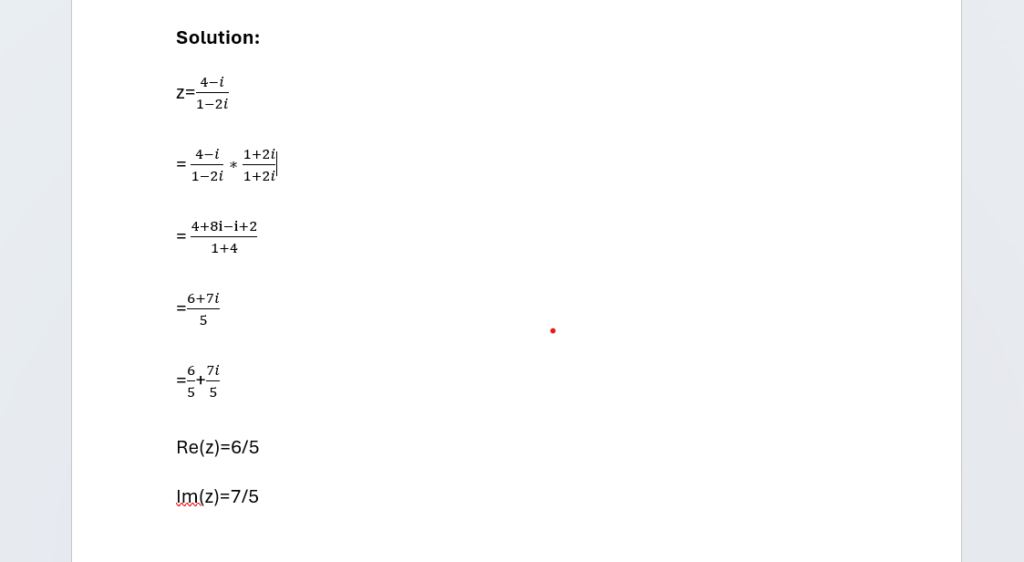1. What is a complex number?
A) A number with both real and imaginary parts
B) A number that consists iota
C) A number that cant be mathematically represented
D) both A and B
2. How complex numbers can be represented?
A) a+ bi
B) eiθ
C) a× bi
D) All
3. How imaginary part of the complex numbers is denoted?
A) e
B) i
C) i2
D) in
4.” In a+ bi“, identify real and imaginary parts.
A) a is an imaginary part
B) b is the imaginary part
C) there is no real part
D) a is the real part and b is an imaginary part
5. How does Euler’s formula relate complex exponentials to trigonometric functions?
A) eiθ=cos(θ)+i sin(θ)
B) eiθ=sin(θ)+i cos(θ)
C) eiθ=tan(θ)+i cot(θ)
D) eiθ=sec(θ)+i csc(θ)
6. What is the value of i, iota?
A) sqrt(-1)
B) -1
C) 0
D) 1/3
7. What is the value of i2?
A) -1
B) 0
C) can’t be determined
D) It depends on the problem
8. Solve the equation for z, z2 +4=0.
A) z=2i
B) z=-2i
C) z=2,-2
D) z=2i,-2i
z^2=-4
take square root on both sides
z=sqrt(-4)
z=2i,z=-2i
9. If z=4+2i, find the complex conjugate of z
A) z=4+2i
B) z=-4+2i
C) z=-4-2i
D) z=4-2i
10. What is the sum of 3+2i and 1-6i?
A) 5+2i
B) 1-2i
C) 4+4i
D) 4-4i
Here 3 will be added with 1 which will result in “4” and 2 will be added with -6 which will result in “-4”.
11. If a+bi=3+4i, what is the value of a-b?
A) 1
B) -1
C) 3
D) 6
12. Find the value of z, 2z+1=0.
A) z=1/2
B) z=-1/2i
C)z=-i
D) i/2
13. Find the cube roots of z = −8.
A) 0
B) 1/3
C) -2
D) 2
14. Identify the real and imaginary parts of z=(4-i)/(1-2i).
A) Re(z)=4, Im(z)=2
B) Re(z)=-4, Im(z)=2
C) Re(z)=-4, Im(z)=1/2
D) Re(z)=6/5,Im(z)=7/5

[…] and denominator factors can be found separately.30. Does complex numbers have factors?Yes, complex numbers have factors.31. Find the common factors of 18 and 24.To find the common factor of 18 and 24. First, […]